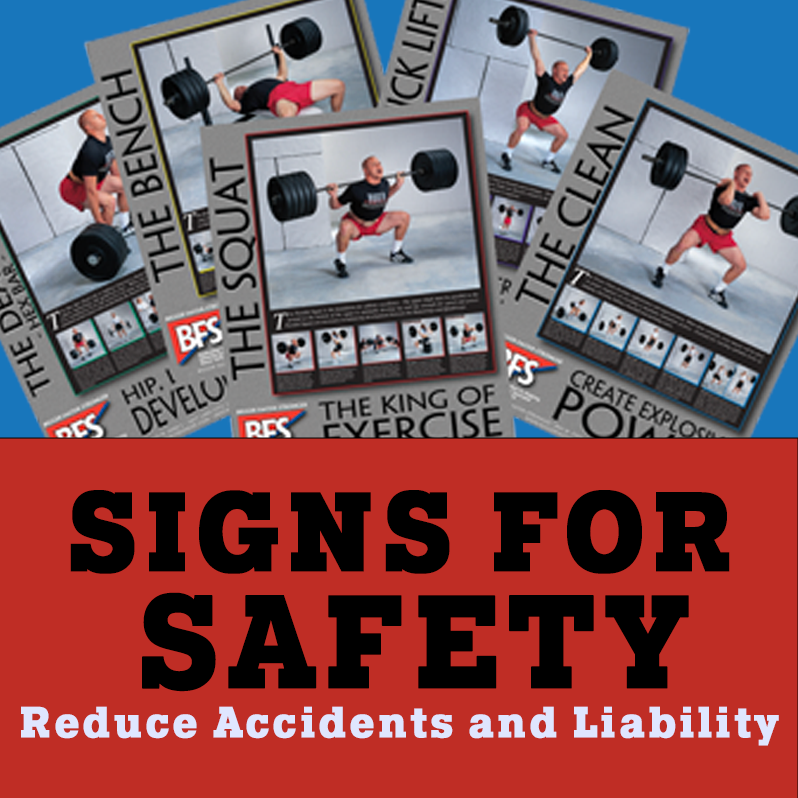SIGNS OF A SAFE WEIGHTROOM

Genersl Guidelines, Size and Color, Shapes, Subject Matter, General Rules and more.
By Dr. Richard P. Borkowski
Coaches and fitness instructors have a responsibility to present the benefits of weight training. They also have a duty to warn individuals about the potential dangers associated with participation. Strategically placed and well designed signs are an inexpensive, simple and too often overlooked strategy to inform and, at the same time, warn weight room users. Signage may not insure a participant’s safety but it can lower the chance of injury. Well planned signs help us meet our duty to warn and inform while lowering the chance of injury. They also demonstrate your concern and credibility. Consider the following game plan for your weight room.
General Guidelines
1. Ask yourself, would a sign or label improve safety? Where would they be most conspicuous?
2. Signs are to help, not to decorate and not to confuse.
3. Signs should be simple, short and clearly stated.
4. Signs are not replacements for good instruction and supervision.
5. Signs should be placed at the sight line of the majority of those who will be using the facility. This is usually between 5’ to 7’ high.
6. Keep signs as positive as possible. Signs that start with “Do Not” are generally ineffective.
7. Orientation should include pointing out the signage.
8. Replace all damaged, illegible or missing signs.
9. Manufacturers generally supply labels. They should address the possibility of injury or death if caution is not used.
Size and Color
Wall sign letters should be at least 2” high. Key words, such as “Warning” or “Caution,” should be at the top and about two to three times the size of the other print. Remember to place contrasting colored strips on steps. A one to two inch wide strip is normal. Some colors grab attention better than others.
For example:
• A danger sign is usually white letters on a red background.
• A warning sign is usually black letters on an orange background.
• A caution sign is usually black letters on a yellow background.
• A general safety sign is usually white letters on a green background.
Shapes
Different shapes can be used to emphasize meaning. For example:
• Rectangular signs generally mean information.
• Triangle signs mean caution.
• Eight sided signs mean danger.
Subject Matter
Colors and shapes are important, but even more important is the information that these signs convey. Use only simple words, phrases or graphics that are easy to understand. Use only internationally accepted graphics. Remember that simple words are better than complex graphics. However, symbol signs may be more helpful to multi-cultured users than words.
Sign subjects include:
• Information, such as “Replace weights to storage racks.”
• Warnings, such as “Always use a spotter.”
• Exit signs.
• Rules of the Weight Room.
• Phone and emergency numbers.
• Motivational signs. Weight Training Rules General Rules
• Only students who have passed the instructional course may use the weight room.
• The room may be used only with proper supervision.
• Shirt and shoes are required. • Proper stretching, warm up and cool down are required.
• No spectators allowed.
• Never interfere with the exerciser.
Concerning Machine Weights
• Read the information label before using.
• Keep pins in the machines.
• Avoid quick movements.
• Never drop weight plates.
Concerning Free Weights
• Spotters must be used.
• Use collars.
• Return all weight plates to racks.
